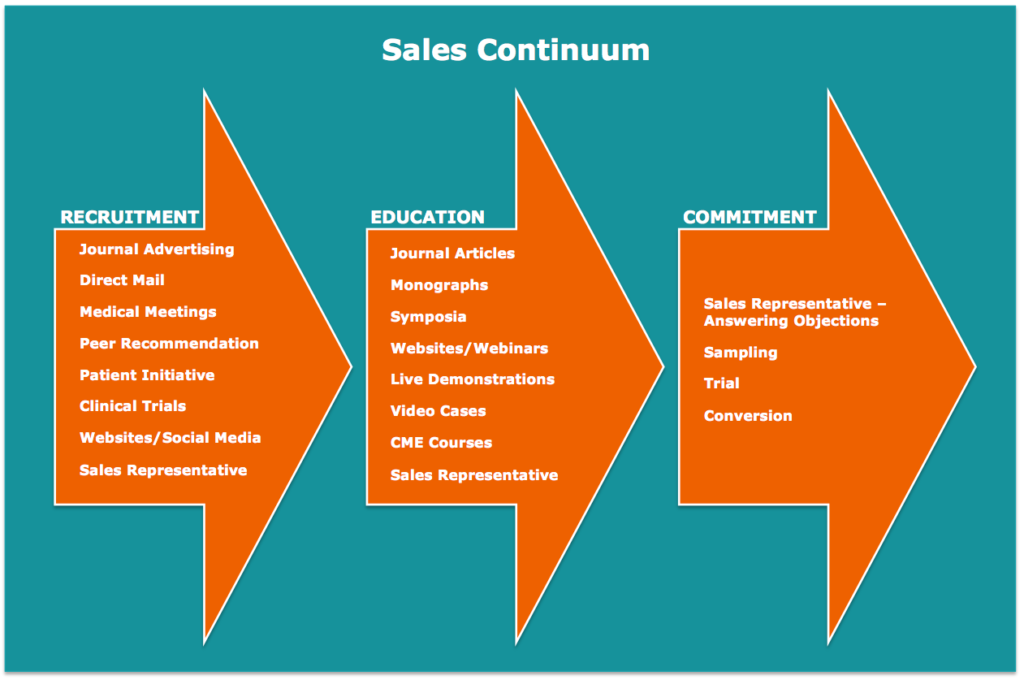To the outside observer, it may seem at times that an advertising agency is a little like a bunch of folks playing with crayons, whether digital or actual. However, underneath all that free thinking and exploration, there is a very definite discipline. Here is a painfully detailed description of the process that almost every ad agency employs. To provide a thorough overview, the process described here is that of a large agency with large clients. Smaller agencies working with smaller budgets will typically employ an abbreviated version of this process.
The basic unit of production in an advertising agency is the creative team (copywriter and art director) and an account executive. Ideally, all creative work produced by the agency will result from effective collaboration between these individuals and direction from the Creative Director.
In the best of all possible worlds, this is how it works:
The account executive establishes with the client the need and purpose for a marketing communications tool (ad, brochure, video, tv spot, mobile app, blog post, etc.).
The account executive develops with the client complete and definitive input for the creative job, including audience, media, primary message, relevant product/service attributes , call to action, compelling and differentiating benefit, and a clear statement explaining how this project fits into the client’s overall marketing strategy. This step may or may not involve the Creative Director or the creative team. In any case, all pertinent questions must be asked and all necessary information must be acquired before the job is assigned to the creative team.
The account executive meets with the creative team and, if appropriate, the Creative Director to provide input for the job. Creative Input Forms must be provided, including all information indicated above and any other relevant information. The input meeting should provide the opportunity for the creative team and Creative Director to ask questions and ensure that they fully understand the purpose of the job and all the input provided. It is the responsibility of the creative team to make sure they understand the job and the input. If significant, unanswerable questions are raised at this meeting, the account executive will be responsible for following up with the client to provide the missing information. It will be up to the creative team and Creative Director to decide whether work can begin on the project without this additional information. Once the creative team accepts the job and associated input, at this meeting or at a subsequent time, the responsibility shifts to the creative team to execute the job on time and on budget.
The creative team (art director and copywriter) work together to analyze the input and develop potential approaches to the communications challenge. As part of this process, they explore alternative creative concepts involving both verbal and graphic elements. Along the way, they present promising approaches to the Creative Director for feedback and direction. They will also explore the most promising approaches with the account executive on an informal basis to ensure that they present the message accurately and are consistent with the client’s overall marketing strategy. During this process, depending upon the agency’s relationship with the client, the creative team, Creative Director or account executive may contact the client for additional information and/or clarification.
When the creative team is satisfied that they have explored the communications challenge adequately (within the limitations of deadlines and budget), and have developed what they believe are appropriate and powerful creative concepts, they present the most promising of these to the Creative Director for approval. (It should be noted that neither a headline nor a graphic approach is “the concept.” Only a fully integrated combination of verbal and visual content that triggers understanding in the mind of the viewer is truly an advertising concept.)
Concepts at this point are usually a headline and graphic worked out only far enough to communicate the intention of the creative team. Typically, most or all of these concepts will be refinements or derivations of work previously reviewed by the Creative Director during the course of creative development. At this point, the Creative Director will review the creative input and marketing objective with the creative team to ensure that all of the concepts communicate the appropriate message to the appropriate audience(s). The Creative Director will then select from the short list of concepts that are on target the two or three that also meet the highest standards of creative excellence, as clearly defined in the agency’s Creative Philosophy.
If no concepts meet this standard, the Creative Director will explore potential modifications and/or alternative approaches with the creative team and assign a deadline for a follow-up review. This process will be repeated as necessary until excellent, on-target concepts are developed. (The creative team will inform the Project Manager of progress and changes at every stage of the job so that scheduling and potential deadline conflicts can be avoided.)
Once concepts have been approved by the Creative Director, the creative team will clean them up as necessary so that they communicate the idea clearly and quickly and present them to the account executive. The account executive will review the concepts primarily for content and appropriateness for the market. The major question to be answered is: “Does this concept communicate the right message to the right audience(s)”? The account team will often have useful suggestions about the creative execution as well. The creative team should consider these suggestions with an open mind. However, questions of style and creative execution will ultimately be referred to the Creative Director for resolution.
If the account executive identifies legitimate problems with any or all of the concepts presented by the creative team, the account executive will meet with the creative team and the Creative Director to explain the problem(s). If appropriate, the creative team may be directed to develop alternative concepts that avoid the problem(s) identified by the account executive. This may require rescheduling of the entire job. If so, the account executive will be responsible for advising the Project Manager and the client. Usually, however, the account executive will have identified major problems along the way as the creative team informally discusses various approaches with him or her and only minor modifications will be necessary at this point.
Once final concepts are approved internally, they are prepared by the creative team for presentation to the client. If the work is a continuation of an existing campaign, it may be presented to the client by the account team. If the work represents a departure from previous work or is the beginning of a new campaign, one or more members of the creative team and/or the Creative Director may present the work to the client along with one or more members of the account team.
One or more people on the client side will often have comments or suggestions about the creative execution. These are to be aggregated and clarified by the account executive and presented to the creative team as client feedback and not as a client directive. Client comments are not “changes,” they are requests for modification. It is the responsibility of the creative team to determine what specific changes or new concepts best accomplish the objectives identified in the client feedback. The Creative Director will have the final responsibility for determining whether creative changes meet client needs.
After client approval of concepts, the creative team will continue to work together to develop the copy and layout. The art director will take primary responsibility for the layout and the copywriter will take primary responsibility for the copy. However, they should work together as a team to ensure that the final layout, graphic elements, copy, subheads, captions, charts, etc. work together perfectly. Again, the account executive may present copy and layout to the client or some combination of creative and account team members may present.
Various people on the client side may have comments or suggestions about copy and/or layout. Once again, these are to be aggregated and clarified by the account executive and presented to the creative team as client feedback and not as a client directive. Here also, client comments are not “changes,” they are requests for modification. Once again, it is the responsibility of the creative team to determine what specific changes best accomplish the objectives identified in the client feedback. The Creative Director will have the final responsibility for determining whether creative changes meet client needs.
Print Production: Once the copy and layout have been approved by the client, it is the responsibility of the art director to work with Production to produce the piece. It is the responsibility of the copywriter to review the work at appropriate times (as determined by the Project Manager) and to clearly identify any problems with accuracy, legibility, copy fitting, or any other aspect of the work that seems less than the best the agency can produce.
Video, Broadcast, Digital Production: Once the copy and visual approach have been approved by the client, either the copywriter or art director will typically produce the final project. On larger projects, both may co-produce. It is the responsibility of the lead producer to work with internal and external resources to produce the project on time and on budget. It is expected that both members of the original creative team will be involved in providing input and helping to shape the look and feel of the final product. But it is usually the clear and consistent vision of a single producer that inspires the best work.

